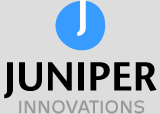Many organisations working in logistics are talking about using a mixture of existing and new technology to steal a march on the competiton at the start of this year. They believe a combination of high quality business analysis and new technology will help achieve their twin aims of spending to save and gaining higher returns on investment. The impetus is from a variety of sources. Whether driven by business analysis coming from innovations programs, green initiatives, being more productive, hitting performance targets, reducing costs, offering better service, winning new business, increasing revenue, cash flow and profits. So what is the technology in question?
Stealing a march with existing and new technology
Due to contractual, legislative or performance reasons, organisations are looking to capture more data about their business that works in logistics areas. After as all good business analysts say, “all you can’t manage what you can’t measure.” So to get the most from existing PDAs, mobile phones, spreadsheets, Access and other databases we’re being asked to develop small applications and reporting packages. Remember this is through necessity as organisations look for stronger return on investment. So the type of projects being considered are:
- Timesheet monitoring e.g. facilities management, time charging businesses such as consultancies and solicitors, HGV drivers, warehouse workers
- Lone and mobile worker tracking, secrity measures combined with work completion reports
- Mobile worker health and safety reporting and risk assessments
- Document and signature tracking for induction training, operational procedure sign off and questionnaires assessment including health and safety, manual handling and fire safety or NVQ work
New technology is also being used in the above mix with digital pens and improved GPS tracking functionality. This gives organisations the ability to carry on work as normal with little or no change to existing practices and procedures. Examples are:
- Using a digital pen to track and report on questionnaires, forms, meeting minutes etc and automatically making and emailing digital copies
- Reviewing, tracking and complete business analysis on health & safety and training documentation online rather than requesting local copies, waiting for delivery then storing in local or central filing cabinets
- Reporting on individual driver timesheets where vehicles or assets are shared between a pool of drivers and understanding individual driver performance and utilisation
- Knowing and reporting what parts of vehicles are being used such as tail gate or front lifting operations, road sweeping brushes or grass cutting blades
These efficiencies are helping businesses automate report production and manage their existing business resources and assets more effectively.
Our systems analysts and data analysts are therefore also looking at not only how data can b collected within businesses, but also how it can be put to be better use to help drive businesses forward, save costs and increase profits.
